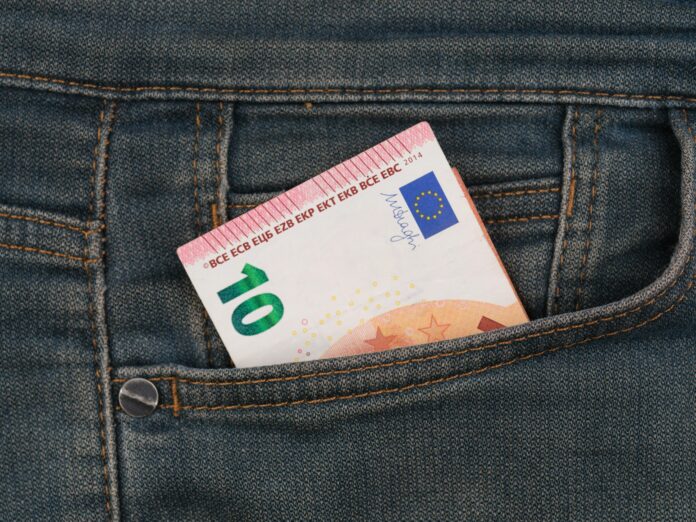S&P Global Ratings has sounded a warning over France’s fiscal resilience, cutting the country’s long-term sovereign credit rating from AA- to A+ on 17 October 2025, while assigning a stable outlook. The decision underscores growing concern over France’s rising public debt and limited political capacity to implement meaningful fiscal reform.
Rising Debt and Slowing Momentum
According to S&P, France’s debt burden is set to climb from around 112 per cent of GDP at the end of 2024 to nearly 121 per cent by 2028 — among the highest ratios in the eurozone. Although the government is expected to meet its 2025 budget-deficit target of 5.4 per cent of GDP, the agency warned that further progress will likely stall unless new deficit-reduction measures are introduced.
In short, France’s fiscal dynamics are deteriorating. Structural rigidities, high spending, and a fragmented political environment threaten to undermine efforts to stabilise the country’s debt trajectory. The downgrade, while modest in technical terms, represents a deeper statement about France’s economic governance and reform stamina.
Government Response and Political Headwinds
Finance Minister Roland Lescure responded by reaffirming France’s commitment to fiscal discipline — including plans to lower the deficit to 4.7 per cent of GDP by 2026 and eventually meet the EU’s 3 per cent limit. Yet the government faces an uphill battle. President Emmanuel Macron’s administration operates without a parliamentary majority, and the political climate ahead of the 2027 presidential election leaves little room for controversial reforms.
Key structural initiatives, such as pension reform, have already been paused following public backlash. With social tensions simmering and legislative gridlock mounting, the fiscal roadmap risks becoming aspirational rather than actionable.
Market Reaction and Investor Concerns
Financial markets reacted cautiously. While France remains a solidly investment-grade borrower, investors have begun to demand a higher premium for its debt. The spread between French and German 10-year bond yields widened to about 78 basis points, up from a typical range of 40–50 bps, reflecting doubts about Paris’s ability to rein in spending.
For now, borrowing costs remain manageable — but the direction of travel matters. Each incremental rise in yields adds strain to France’s already-hefty interest burden, tightening fiscal space and reducing flexibility in future downturns.
Why S&P Moved Now
S&P’s decision rests on three main factors:
- Debt trajectory – France’s debt-to-GDP ratio is forecast to exceed 120 per cent within three years, a concerning figure for a country still rated among Europe’s top-tier credits.
- Weak growth outlook – Real GDP growth is expected to hover around 1 per cent in 2025, limiting the nominal expansion needed to stabilise debt ratios.
- Political fragmentation – A divided parliament and frequent leadership changes make durable fiscal reforms harder to pass. S&P noted that the 2027 election cycle “casts doubt” on the likelihood of further structural progress.
Taken together, these factors point to a fiscal system under strain — one that can no longer rely solely on France’s economic size or eurozone membership as guarantees of stability.
The Downgrade’s Real-World Impact
Although France remains comfortably within investment-grade territory, the downgrade narrows its advantage over peers and may gradually raise financing costs. Institutional investors could begin reassessing France alongside other “single-A” sovereigns rather than its traditional AA-level cohort, subtly eroding its standing as a core European credit.
Beyond markets, the move reinforces constraints on fiscal policy. It raises the political cost of additional borrowing, limits scope for stimulus during economic slowdowns, and increases the need for credible long-term consolidation.
A European Ripple Effect
The downgrade also carries symbolic weight within the EU. Only weeks earlier, Fitch Ratings had cut France to A+, aligning its view with S&P’s. Together, the two downgrades weaken the perception of French debt as a “near-reserve” asset and could reignite debate over fiscal divergence within the eurozone.
Other European economies — including Italy and Belgium — are also under scrutiny for high debt levels, but France’s size gives its rating movements outsized significance. Any erosion in investor confidence could spill over into broader regional risk sentiment.
Limited Fiscal Room for Manoeuvre
France’s fiscal structure leaves little margin for adjustment. Its tax burden and public expenditure are already among the highest in the OECD, driven by energy subsidies, pension obligations, and public-sector wages. Efforts to cut spending are politically sensitive, while new taxes risk stifling consumption and provoking unrest. S&P warned that absent faster growth, France would need a primary surplus merely to stabilise its debt — something not achieved in more than two decades.
What Comes Next
The government’s immediate challenge is to steer its 2026 budget through a divided parliament and demonstrate tangible progress toward its deficit targets. Markets and rating agencies alike will look for credible, multi-year fiscal plans and evidence of structural reforms capable of boosting long-term productivity.
Failure to show such progress could invite further downgrades. Moody’s, which currently rates France at Aa3 with a stable outlook, may come under pressure to reconsider its assessment if debt ratios continue to rise.
A Warning, Not a Crisis
For now, France’s downgrade is a warning rather than a crisis. The country retains deep capital markets, strong institutions, and the implicit stability of eurozone membership. Yet the signal from S&P is unambiguous: large economies are no longer immune to fiscal scrutiny. High debt, weak growth, and political inertia form a combination that markets can no longer ignore.
If Paris responds with decisive, credible action — including expenditure restraint and growth-oriented reform — it could stabilise its standing and eventually restore its rating strength. If not, this downgrade may mark the start of a new era in which France’s fiscal legacy becomes a strategic vulnerability, not an asset.














